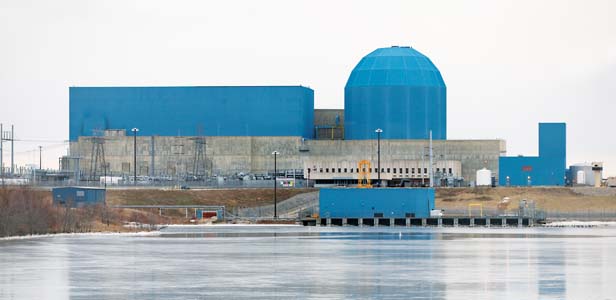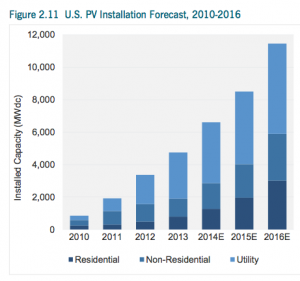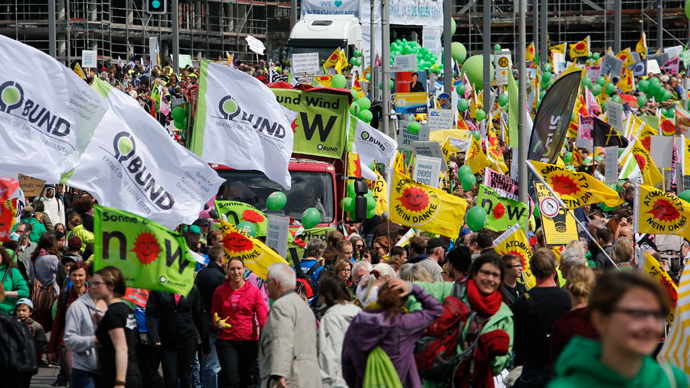
Doh! We goofed! More specifically, I goofed. In an Alert NIRS sent out yesterday on EPA’s new carbon rules and other nukes/climate issues, I wrote: “As worded, it seems that EPA would encourage ratepayer (that’s you and I!) subsidies of 6 cents per kilowatt/hour of generation to support six percent of a state’s existing nuclear generating capacity. That’s a strange formulation and is based on the notion that about six percent of the nation’s nuclear capacity is uneconomic and thus subject to early shutdown. That subsidy by itself is higher than the cost of most new wind power, and even solar power in many locations.”
Actually, the subsidy would be .6 cents kilowatt/hour. Simple, and stupid, math mistake. So the last sentence of that paragraph is completely wrong. I had thought that subsidy seemed stunningly high, especially since it’s designed to prop up reactors that are already uneconomic because they can’t provide electricity at a low enough cost. Should have double-checked the math. So the subsidy itself—if any state chooses to adopt it—wouldn’t be higher than the cost of new wind or solar power; but the overall cost of electricity from these failing reactors, especially with any subsidy added, still would be much higher than either. I would also note that this subsidy would be six times higher than the recently-withdrawn Nuclear Waste Fund fee nuclear customers have been paying. And at least that fee went to something useful: building up funds to deal with the $100+ Billion radioactive waste problem nuclear utilities have been creating for the past 50 or so years.
A key phrase here is “if any state chooses to adopt it.” In fact, since the proposed EPA carbon rules don’t require states to achieve their carbon reductions in any particular manner, the states in theory could allow even higher subsidies. The .6 cents kilowatt/hour number is based on a single Credit Suisse study; there is nothing to prevent nuclear utilities like Exelon from doing their own studies and coming up with different numbers—probably even higher. Would the EPA reject a higher subsidy if a state chose one? For that matter, could the EPA reject a higher subsidy if a state chose one? The answers to those questions are as clear as the mud at the bottom of my coffee cup this morning…. As is the issue of whether the EPA would allow subsidies for all operating reactors, or just the six percent of capacity it thinks is endangered.
In any case, I apologize for the error.
I also wrote in that Alert: “The proposal itself doesn’t mandate any particular carbon reduction strategy; it leaves it to the states to decide how to meet the carbon goals. And that means the focus of the battle to end nuclear power will shift largely to the states in coming months and next year. The nuclear industry already has made clear it plans major campaigns to get nuclear included in new “clean” or renewable energy standards at the state level—which would make a mockery of those standards and deter the deployment of clean renewables and energy efficiency programs.”
As the Chicago Tribune reported Tuesday, Illinois will be a centerpiece of the battle in the states, and nuclear giant Exelon is gearing up to protect its uneconomic reactors: “On Thursday, Exelon Chief Executive Chris Crane said he was looking for a ‘clean energy standard that would compensate or have some clean energy credits for generation that is carbon free.’ Since Illinois already gets most of its electricity from nuclear power, adding it to a “clean” energy standard would prevent just about any new investment in actual clean energy sources.
In a Business Week article Monday, an analyst for Sanford C. Bernstein & Co. said of the EPA’s nuclear approach, “Exelon is clearly the biggest beneficiary here,” said Dumoulin-Smith, who rates the company a hold and doesn’t own the shares. “This is all about keeping the nukes around.”
But, as the Tribune article reports, Exelon’s problem—the reason so many of its reactors are failing economically—is pretty simple: “Robert McCullough, managing partner at McCullough Research in Portland, Ore., said a carbon rule won’t solve all of Exelon’s problems. ‘The downward pressure on prices comes from inexpensive natural gas and zero marginal cost renewables,’ McCullough said.
Expect a pitched battle in Illinois next year on this issue, but expect the same in many other states as well.
Otherwise, reaction to the EPA’s proposal was pretty much as expected. Coal industry groups blasted the proposal, but, of course, the coal industry could care less about global warming. Utility groups were generally wary, but didn’t reject the proposal out of hand—they’re still trying to figure out the winners and losers. And renewable energy groups supported the proposal.

If you’re looking for some good news today, here it is: solar power accounted for 74% of all new U.S. electrical capacity in the 1st quarter of 2014. And at 20%, wind power made up most of the rest. But it gets even better: “[Solar] Installations for 2014 are expected to jump to 6.6GW in 2014, a rise of more than one third from 2013, and double the rate of 2012. According to Greentech Media, that rate is expected to nearly double again by 2016.”
And remember that figure we reported early this year, that a new solar installation is being installed every four minutes in the U.S.? Scratch that, it’s already down to every 2.4 minutes. Projections that it would drop to every 90 seconds by 2016 now seem overly pessimistic….
 Finally, we’re going to repeat a poll we posted last week that very few people responded to. We’re trying to gauge the level of support for a large anti-nuclear contingent at the September 20 climate march and rally in New York City. The photo to the right, taken at last month’s renewable energy rally in Berlin, is what we’d like to see in NYC—a sea of anti-nuclear flags, banners and signs, making the sentiment clear than nukes can’t save the climate. We are ready and willing to organize for this event. But if we’re going to put resources into it, we need to know if there is sufficient interest. Let us know either way: will you come to NYC September 20? Feel free to leave a comment. Your thoughts on this are important to us. And if you’re willing to help organize in your community, send us a quick e-mail to nirs@nirs.org.
Finally, we’re going to repeat a poll we posted last week that very few people responded to. We’re trying to gauge the level of support for a large anti-nuclear contingent at the September 20 climate march and rally in New York City. The photo to the right, taken at last month’s renewable energy rally in Berlin, is what we’d like to see in NYC—a sea of anti-nuclear flags, banners and signs, making the sentiment clear than nukes can’t save the climate. We are ready and willing to organize for this event. But if we’re going to put resources into it, we need to know if there is sufficient interest. Let us know either way: will you come to NYC September 20? Feel free to leave a comment. Your thoughts on this are important to us. And if you’re willing to help organize in your community, send us a quick e-mail to nirs@nirs.org.
In the meantime, if you can make a tax-deductible donation to help pay for production of that sea of flags, banners and signs, please go to our special donation page here. We gratefully appreciate every contribution of any size.
[polldaddy poll=8069160]
Michael Mariotte
June 5, 2014
Permalink: https://www.nirs.org/2014/06/05/nukesclimate-fallout-goof-and-poll/
You can now support GreenWorld with your tax-deductible contribution on our new donation page here. PayPal now accepted. We gratefully appreciate every donation of any size–your support is what makes our work possible.
Comments are welcome on all GreenWorld posts! Say your piece above. Start a discussion. Don’t be shy; this blog is for you.
If you like GreenWorld, you can help us reach more people. Just use the icons below to “like” our posts and to share them on the various social networking sites you use. And if you don’t like GreenWorld, please let us know that too. Send an e-mail with your comments/complaints/compliments to nirs@nirs.org. Thank you!
Note: If you’d like to receive GreenWorld via e-mail daily, send your name and e-mail address to nirs@nirs.org and we’ll send you an invitation. Note that the invitation will come from a GreenWorld@wordpress.com address and not a nirs.org address, so watch for it.




0 responses to “Doh! We goofed. And other fallout on nukes/climate issue + poll!”